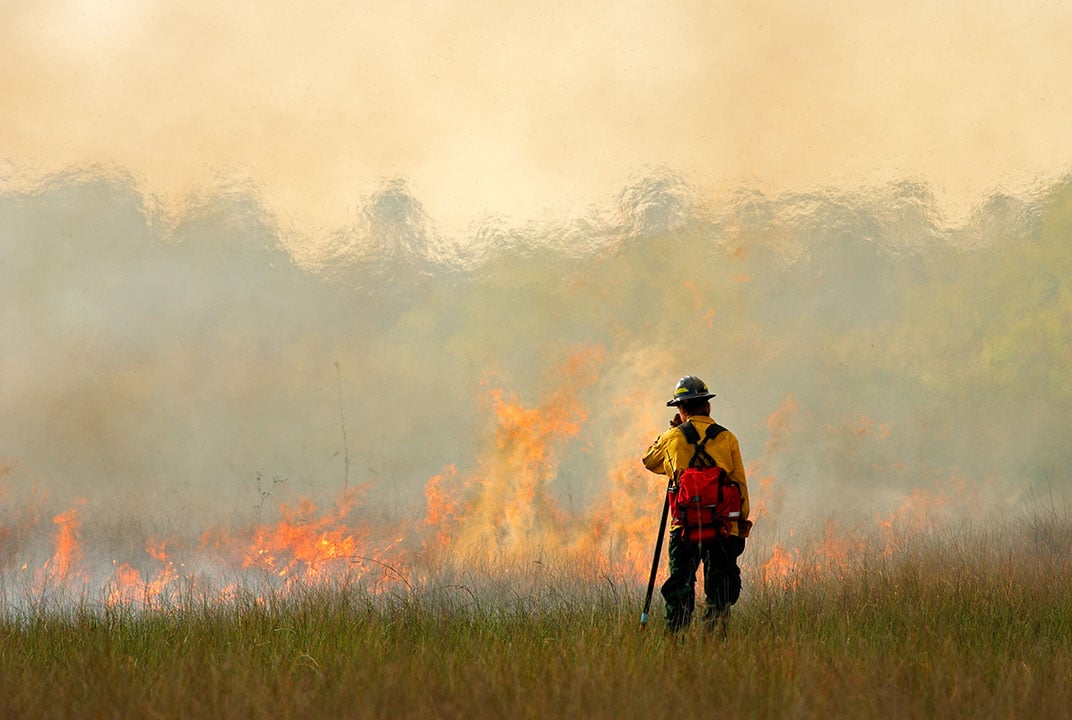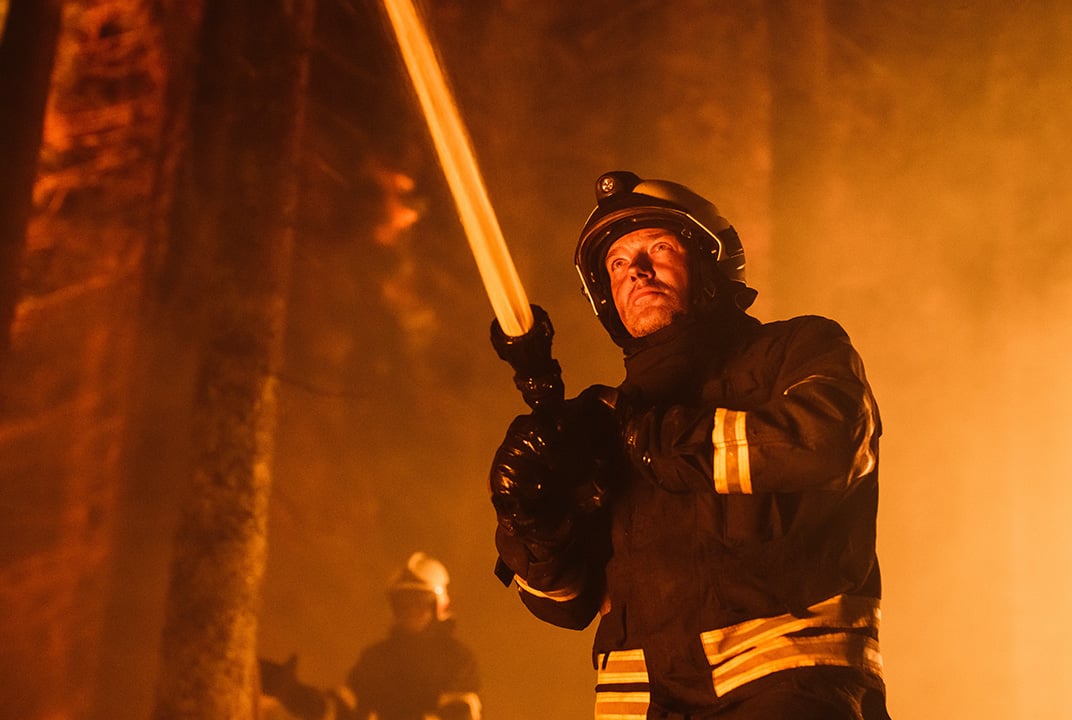Discover how a BGAN terminal survived a Tsunami to deliver real-time data and improve disaster response in the Amazon.
Insight | Disaster management: the essential role of satellite communications
Disaster management: the essential role of satellite communications
- We live in a very uncertain world where natural and manmade disasters are becoming ever more frequent and satellite communications emerged as a game-changer for disaster management.
- In this article, we explore how satellite communications have revolutionised emergency response efforts, enabled seamless coordination, provided reliable connectivity and real-time communication in the face of climate disasters, natural calamities, war zones and other large scale emergency responses.
Discover how our satellite networks have supported emergency response missions around the world.
Download case studyWe increasingly rely on emergency response teams to help in crisis situations to assess and repair the damage and more importantly, save lives when every second counts.
While each situation is different, effective coordination is always paramount for emergency response teams tasked with saving lives and ensuring the safety of affected communities during disasters.
Satellite communications’ emerged as a game-changer for disaster response management. With terrestrial communications often the first thing to go down when disaster strikes, space-based satellite communications provides critical connectivity and data exchange in real time to inform coordination centres and first responders on the ground.
Preparation is key
In today’s world, satellite communications can serve as a powerful tool to inform and prepare the public in the event of a disaster. As satellite-based systems are less susceptible to ground-based disasters, satellite-based communication channels often remain operational when terrestrial networks are compromised.
Satellite communications are also integral to efforts to predict when a natural disaster might strike – especially in disaster-prone areas that experience the worse effects of adverse weather and climate change. Emergency management agencies can use satellite communications to not only detect and monitor any incoming threats, such as hurricanes and tsunamis, but also to deliver public service announcements, safety guidelines and information about evacuation routes and shelter locations to help individuals stay informed and prepared to respond effectively to any given crisis, minimising panic and confusion.
For those fortunate enough to own a handheld satellite phone such as Viasat + Inmarsat’s IsatPhone 2, or a residential satellite internet service, they can have direct access to communicate through the given satellite network before, during or after any given emergency or disaster.
Connectivity for coordinated response
Satellite communications form the backbone of connectivity for emergency and first response teams operating in areas where terrestrial telecommunication infrastructure has been severely damaged or is absent. By establishing reliable and instant communication links, satellite communication systems facilitate the seamless exchange of vital information between responders, headquarters and external resources. This connectivity is instrumental in coordinating rescue operations and optimising resource allocation during critical situations.
As seen in California in the US, the outback in Australia, Lisbon in Portugal and other areas, wildfires have caused widespread cell site failures and power outages which disrupt emergency communications. This becomes a public safety threat in itself, making it difficult for command centres to communicate with firefighters, ambulance staff and police officers on the scene or co-ordinating from their bases.
Solutions such as Viasat + Inmarsat’s BGAN or Global Xpress terminals can maintain a consistent connection to our satellites in space for efficient coordination, situational updates and rescue missions between the command centre and those on the ground, where terrestrial telecoms infrastructure can be compromised.
Situational awareness and real-time communication
Anything can happen in an emergency which makes accurate, on-the-ground communication critical to successfully carrying out emergency and disaster missions.
This is where satellite communication really stands out. With lower risk of damage or outage compared to terrestrial communications networks, emergency response teams can receive real-time communication that goes beyond the standard voice and text services. It allows emergency teams on the ground get a full picture of the situation through imagery and GPS information, localised weather updates, enhancing situational awareness and informed decision-making.
Viasat + Inmarsat’s BGAN Patrol, for example, allows dismounted emergency service personnel to maintain a continuous connection with pinpoint accuracy to better navigate through even the toughest of situations where visual line of sight is obstructed, by both sending and receiving situational awareness information.
Rapid deployment and flexibility
In both relief and emergency missions, every second counts and when there is communication blackout, co-ordination becomes extremely difficult. Using satellites requires minimal invasive hardware, which also means user terminals (or mini satellite dishes) can be quickly deployed in all environments, including remote locations, harsh terrains and conflict zones. This flexibility ensures that emergency response teams can establish immediate and reliable communication channels, regardless of the situation or geographical challenges.
For example, Viasat + Inmarsat has been a partner to emergency telecoms agency, Télécoms Sans Frontières (TSF), since 2000. In that time TSF has utilised our satellite airtime and services to rapidly set up connectivity for coordination centres, provide people in remote villages with access to high-speed Wi-Fi via our Global Xpress service, and set up emergency calling operations, putting those displaced by the disaster in touch with family and loved ones via IsatPhone 2, to let them know they are safe.
To date, our connectivity has helped support 20 million beneficiaries of TSF’s work in 73 countries and 850+ NGOs have been supported through 170+ missions. Most recently, TSF deployed to Turkey with our satellite kit following the deadly 7.8 magnitude earthquake.
Satellite communications enables better decision making
The better prepared a team is in its assessment, approach and navigation of a disaster scenario, the greater the chances of mission success. With the high probability of things going wrong, the access to real-time data means emergency teams have a better chance to adapt and reassess the situation for a more effective approach.
In the wake of a devastating hurricane, such as Hurricane Katrina, satellite communications enable meteorological organisations to provide timely weather updates to emergency response teams. These updates help responders anticipate the storm's trajectory, predict its impact on affected areas, and make informed decisions regarding evacuation plans, resource deployment, and relief distribution.
Assessing damage and facilitating Recovery
Satellite communications not only play a crucial role in facilitating real-time communication and coordination during emergencies but also in assessing the damage and supporting recovery efforts after a disaster. By leveraging satellite technology, responders gain valuable insights into the level of destruction and strategise recovery plans accordingly.
In the wake of a major earthquake, satellite communications can be utilised to gather data on ground movement and structural damage. Seismic sensors installed in affected areas can transmit real-time information to satellite systems, enabling geologists and engineers to analyse the impact on buildings and infrastructure. This data helps in identifying areas that are unsafe for re-entry, prioritising rescue operations and formulating plans for reconstruction.
They also facilitate the collection and transmission of crucial environmental data, such as air quality, water contamination and temperature measurements. By monitoring these factors, response teams can assess the impact of the disaster on public health and make informed decisions regarding relief efforts, medical assistance and environmental remediation.
Additionally, satellite-based communication systems can be deployed to enable remote monitoring and evaluation of recovery projects. By connecting field teams with experts and decision-makers, satellite communications ensure that progress is tracked, challenges are addressed in real time and resources are optimised for an efficient recovery process.
Here for now and the future
Satellite communications play a multifaceted role in disaster management, not only supporting real-time communication and coordination during emergencies but also assisting in the assessment of damage and facilitating the recovery process. By leveraging satellite technology, responders can gather crucial data on structural damage, environmental conditions and project progress.
This information aids in making informed decisions, prioritising response efforts and ensuring an effective recovery that promotes resilience and sustainable development. In an increasingly disaster-prone world, satellite communications continue to be an invaluable tool for assessing damage, facilitating recovery and building safer and more resilient communities.


